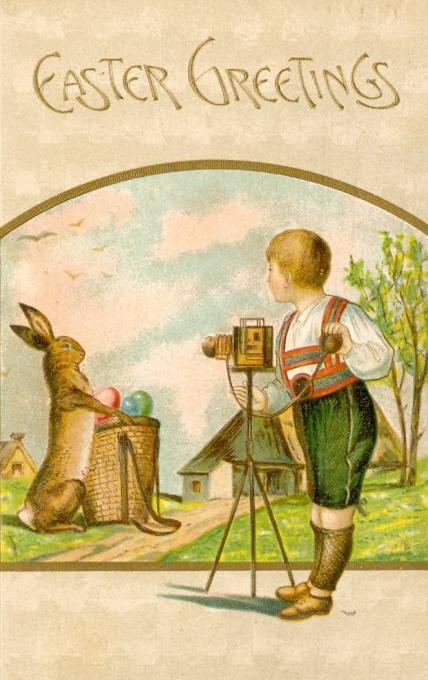
Trousers and Pants: Color

Figure 1.--High-quality color lithographs became appeared in the 1890s. Germany with its advanced chemical industry was a leader. German postcard companies applied English-languasge greetings and exported to the United States. Most high-quality post cards sold in the United States during the early 20th century were printed in Germany. Thic card was obviously printed in Germany because of the quaslity of the orinting and the boy's H0bar short pants, but it was mnailed in America during 1909. Germn exports to the United Stastes ended witn World War I (1914). The bo's pants here are showen as a blue green. We asre not sure how common this color was foir boy's psants, either in Germany or America. The colors used in these lithogrphs were sometimes enhanced for visdual sappeal with compromised the accuracy of the depictions.
|
|
Color is an interesting question and a difficult one to deal with until the late-20th century when color photography became commercially viable and inexpensive. We do have some information on the 19th century. The most reliable information is vintage clothing. Paintings are also useful. Both of the sources are, however, are relatively limited in comparison tothe vast number of photographic images thsat begin to becoe availavle at mid-century. Other sources such as colorized images has to carefully accessed. We also have catalog informaation. In the late-19th century, high-quality color lithographs begin to become availalble. Lithographs were at first for color packaging to add shelf appeal. It was also used in postcsardfs wehich became very populr. Magazimnes begsan adding color images. But with lithographs, color accuracy is sometimes compromised by the tebdency to use bright colors to enhance visual appeal. We have a great deal of nformsation from catalogs in the 20th century which began to use color in their catalogs. Here the accuracy because money was involved can assumed to be fairly accurate. As far as we can see, boys generally wore pants with fairly sober colors, commonly blue, brown, and grey and to a lesser extent black, green, and white. Of course many shades were involved. White was a seaonal color and worn for dressing up or for smsart casual occassions. We see brighter colors in the 20th century, especially for younger boys. We are unsure at this time as to color trends.
HBC

Navigate the Boys' Historical Clothing Web Site:
[Return to the Main trouser page]
[Return to the Main color garment page]
[Introduction]
[Activities]
[Biographies]
[Chronology]
[Clothing styles]
[Color]
[Countries]
[Bibliographies]
[Contributions]
[FAQs]
[Glossaries]
[Images]
[Links]
[Registration]
[Tools]
[Boys' Clothing Home]
Created: 5:22 PM 2/12/2010
Last updated: 5:22 PM 2/12/2010



